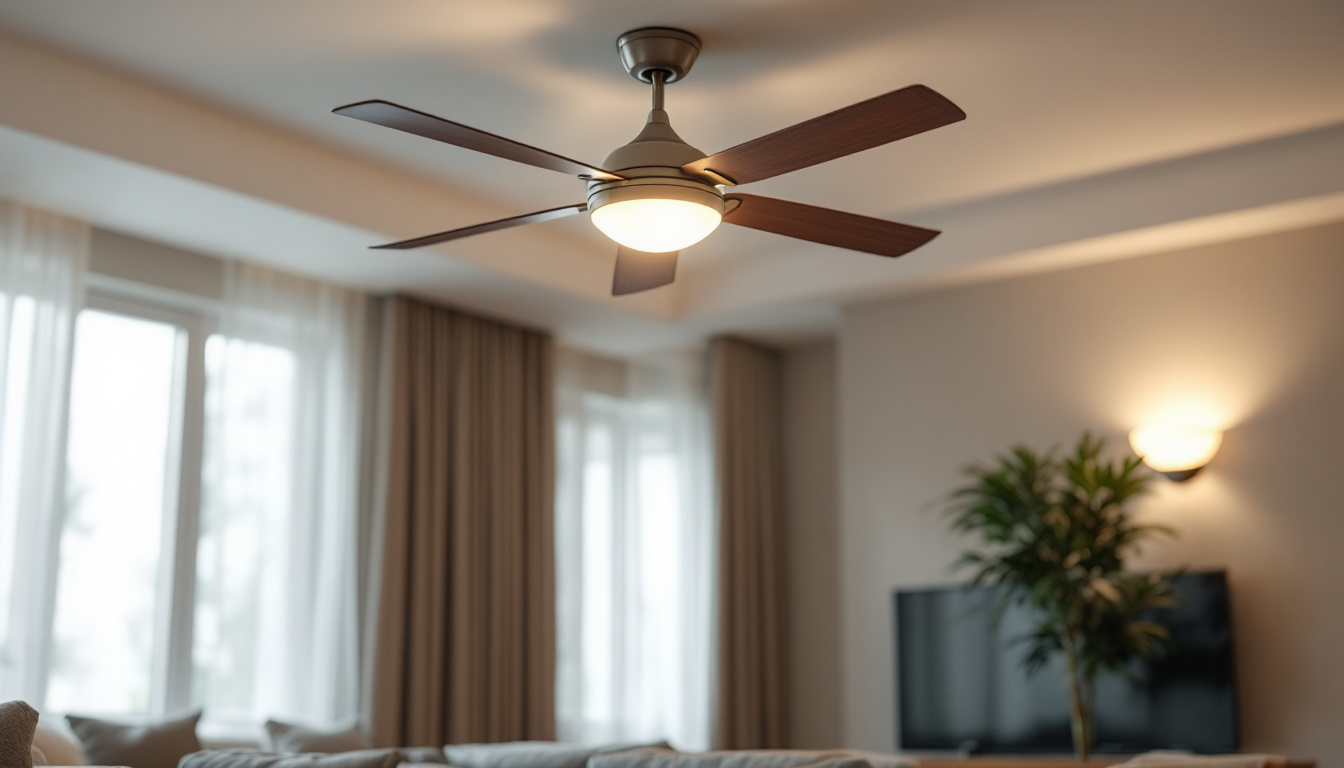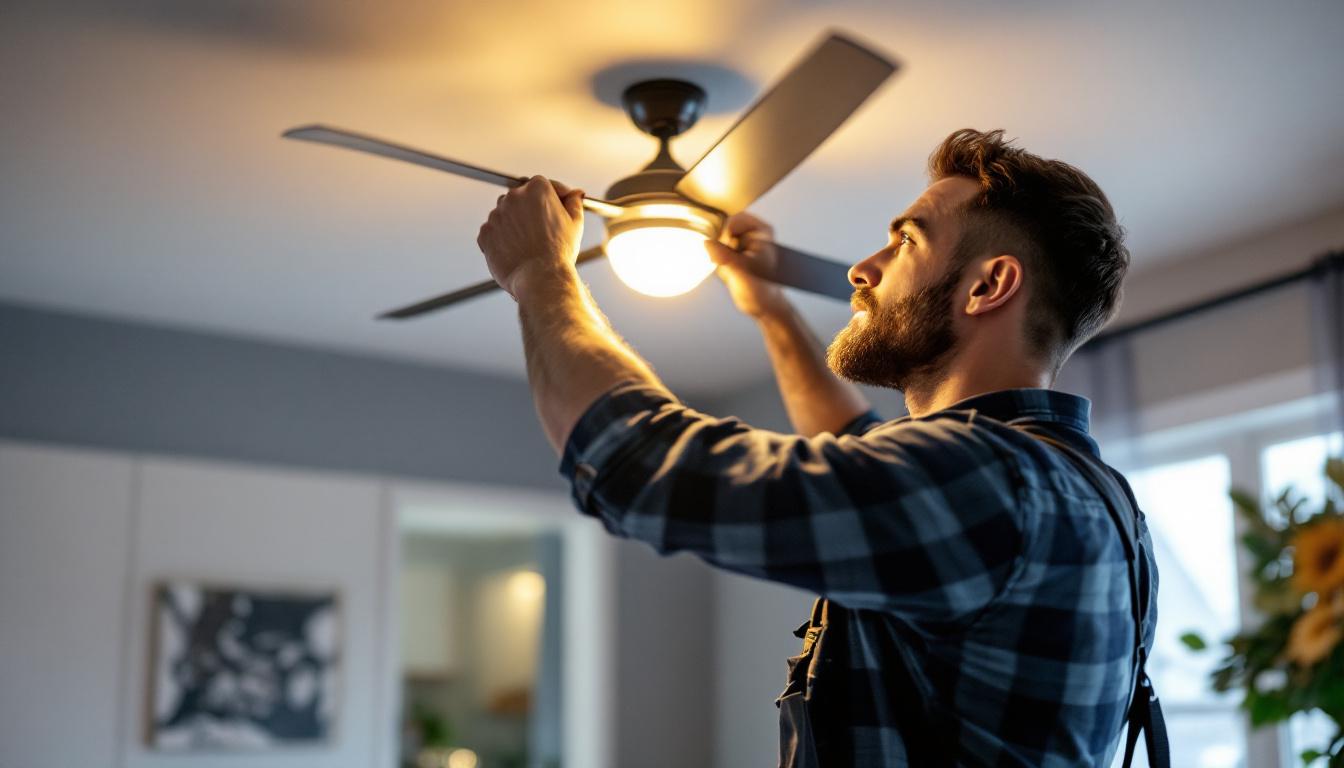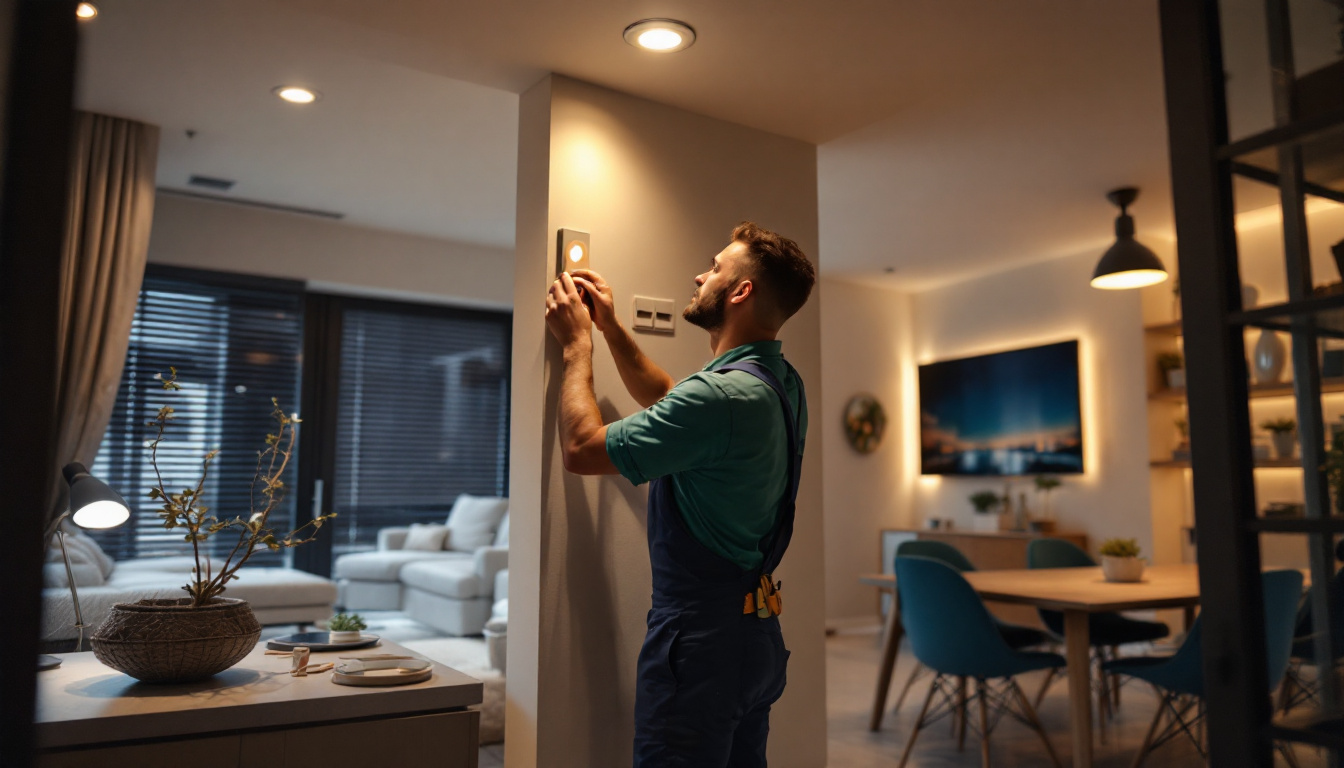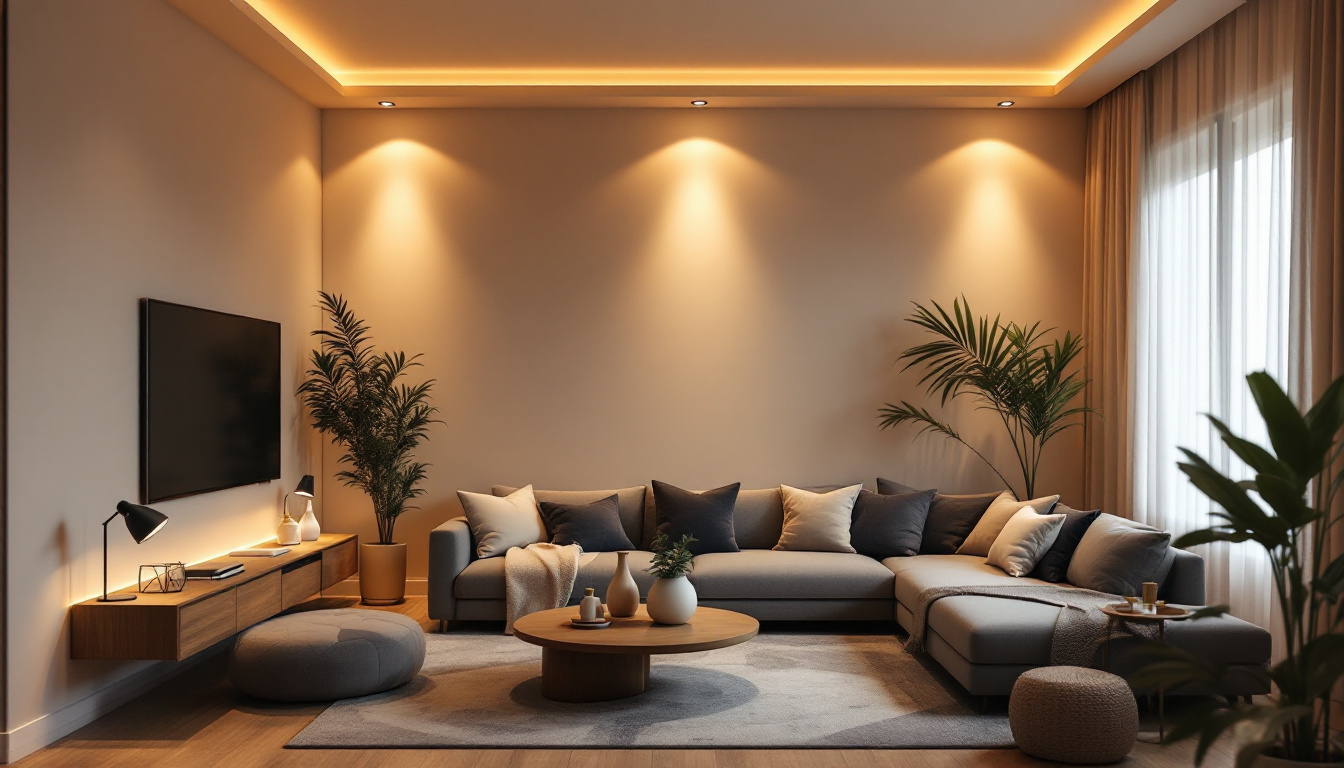
Ceiling fans have long been a staple in residential and commercial settings, providing both comfort and aesthetic appeal. For lighting contractors, understanding the advantages of ceiling fans can help inform better choices for clients seeking efficient and stylish solutions.
One of the primary benefits of ceiling fans is their ability to circulate air, which can significantly enhance comfort levels in a room. By creating a wind-chill effect, ceiling fans allow occupants to feel cooler in warmer months, potentially reducing the reliance on air conditioning systems. This energy efficiency is a key selling point for clients looking to lower their utility bills.
Moreover, ceiling fans can also contribute to heating efficiency in colder months. Many models come equipped with a reverse function that allows the fan blades to spin in the opposite direction, pushing warm air down from the ceiling. This dual functionality makes ceiling fans a versatile choice for year-round climate control.
In addition to their practical benefits, ceiling fans also serve as a design element that can enhance the overall aesthetic of a space. With a wide variety of styles, colors, and finishes available, homeowners can select a ceiling fan that complements their existing decor, whether it be modern, traditional, or somewhere in between. From sleek, minimalist designs to ornate, vintage-inspired models, the right ceiling fan can act as a focal point in a room, adding character and charm.
Furthermore, many contemporary ceiling fans are equipped with advanced technology, such as remote controls and smart home integration. This allows users to adjust settings conveniently from anywhere in the room or even remotely via smartphone apps. Such features not only enhance user experience but also align with the growing trend towards home automation, making ceiling fans an appealing choice for tech-savvy clients looking to modernize their living spaces.
While ceiling fans offer numerous advantages, it is essential for lighting contractors to explore alternative options that may better suit specific client needs. Various alternatives can provide similar benefits in terms of air circulation and ambiance without the need for ceiling-mounted installations.
Some popular alternatives include portable fans, wall-mounted fans, and HVAC systems. Each of these options has its own set of advantages and disadvantages, which can impact the decision-making process for contractors and their clients.
Portable fans are an excellent alternative for clients who require flexibility in their cooling solutions. These fans can be easily moved from room to room, allowing users to direct airflow where it is needed most. They are particularly beneficial in spaces where permanent installations are not feasible, such as rental properties or temporary setups.
However, while portable fans offer convenience, they may not provide the same level of air circulation as ceiling fans. Additionally, they can be less aesthetically pleasing, as they often come in a limited range of designs and styles. It’s worth noting that many modern portable fans now feature sleek designs and even smart technology, allowing users to control them via mobile apps or voice commands, which can enhance their appeal and functionality.
Wall-mounted fans present another alternative that can save space while still providing effective air circulation. These fans are typically installed high on walls, allowing them to blend seamlessly into the room’s design. This option is particularly advantageous in areas with low ceilings or where floor space is at a premium.
One drawback of wall-mounted fans is that they may not provide the same comprehensive airflow as ceiling fans, which can circulate air more evenly throughout a room. Additionally, installation may require more effort and planning, as electrical work is often necessary. However, many wall-mounted fans now come with oscillation features that can help distribute air more evenly across a room, making them a more effective choice than they once were.
For larger spaces or buildings, HVAC systems can be an effective solution for climate control. These systems provide both heating and cooling through a network of ducts, making them ideal for maintaining consistent temperatures across multiple rooms.
However, HVAC systems can be costly to install and maintain, making them less accessible for some clients. Furthermore, they often lack the aesthetic appeal of ceiling fans, which can serve as decorative elements in a room. On the other hand, advancements in HVAC technology have led to the development of more energy-efficient models that can significantly reduce utility bills over time, making them a more attractive long-term investment. Additionally, some systems now incorporate air purification features, enhancing indoor air quality, which is an increasingly important consideration for health-conscious clients.
When advising clients on whether to choose ceiling fans or alternatives, several factors should be taken into account. Understanding these factors can help lighting contractors make informed recommendations that align with their clients’ needs and preferences.
The size of the room plays a significant role in determining the most suitable cooling solution. Larger spaces may benefit from the expansive airflow provided by ceiling fans, while smaller rooms might be adequately served by portable or wall-mounted fans.
Additionally, ceiling height is crucial. In rooms with low ceilings, ceiling fans may not be practical or safe. In such cases, wall-mounted or portable fans might be the better choice. Contractors should measure the room dimensions and consider the layout before making recommendations.
Aesthetics are often a significant consideration for clients. Ceiling fans come in a variety of designs, finishes, and styles, allowing them to serve as both functional and decorative elements in a room. In contrast, portable and wall-mounted fans may not offer the same level of design versatility.
Contractors should engage clients in discussions about their design preferences and the overall theme of the space. This can help ensure that the chosen solution not only meets functional needs but also complements the room’s decor.
Energy efficiency is a crucial consideration for many clients, particularly those looking to reduce their utility bills. Ceiling fans are generally more energy-efficient than air conditioning units, and they can help lower cooling costs when used effectively.
However, the initial cost of installation can also be a determining factor. While ceiling fans may have a higher upfront cost, their long-term energy savings can make them a more economical choice over time. Contractors should provide clients with a clear breakdown of costs and potential savings to aid in their decision-making process.
For lighting contractors, the installation process is a critical aspect of choosing between ceiling fans and their alternatives. Each option presents unique challenges and requirements that must be addressed to ensure a successful installation.
Installing a ceiling fan typically involves mounting the fan to the ceiling, connecting electrical wiring, and ensuring proper balance for optimal performance. Contractors must be familiar with local building codes and safety regulations to ensure compliance during installation.
Proper support is also essential, as ceiling fans can be heavy and require secure mounting to prevent accidents. Contractors should assess the ceiling structure and, if necessary, install a fan-rated box to provide adequate support.
Portable fans require minimal installation, making them an attractive option for clients seeking quick solutions. However, lighting contractors may still need to provide guidance on optimal placement for maximum airflow and efficiency.
Wall-mounted fans, on the other hand, require more extensive installation. Contractors must ensure that the fan is securely mounted and that electrical wiring is safely connected. This may involve drilling into walls and potentially working with existing electrical systems, which can complicate the installation process.
The market for ceiling fans and their alternatives is continually evolving, driven by advancements in technology and changing consumer preferences. Lighting contractors should stay informed about emerging trends to provide clients with the best possible recommendations.
Smart ceiling fans are becoming increasingly popular, offering features such as remote control, app integration, and compatibility with smart home systems. These fans allow users to adjust settings from their smartphones or voice-activated devices, enhancing convenience and energy efficiency.
Contractors should familiarize themselves with the latest smart fan models and their installation requirements, as this technology may appeal to tech-savvy clients looking for modern solutions.
As energy efficiency continues to be a priority for many consumers, manufacturers are developing more energy-efficient alternatives to traditional ceiling fans and portable fans. These innovations may include improved motor designs, blade shapes, and materials that enhance airflow while consuming less energy.
Lighting contractors should keep an eye on these developments and consider recommending energy-efficient options to clients who prioritize sustainability and cost savings.
In the end, the choice between ceiling fans and their alternatives depends on various factors, including room size, aesthetic preferences, energy efficiency, and installation considerations. Lighting contractors play a crucial role in guiding clients through this decision-making process, ensuring that they select the best solution for their specific needs.
By understanding the benefits and drawbacks of each option, contractors can provide informed recommendations that enhance client satisfaction and contribute to successful projects. Staying updated on industry trends and innovations will further empower contractors to deliver the most relevant and effective solutions in the ever-evolving landscape of lighting and climate control.
As you consider the best lighting and climate control options for your clients, remember that LumenWholesale is here to support your choices with high-quality, spec-grade lighting products at unbeatable wholesale prices. Our extensive selection is designed to meet the highest industry standards, ensuring you deliver reliable and high-performance solutions for every project. With free shipping on bulk orders and no hidden fees, LumenWholesale is your go-to source for premium lighting without the premium price tag. Elevate your projects with the perfect blend of quality, affordability, and convenience. Start exploring our collection today and experience the best value in Wholesale Lighting at the Best Value.

Discover expert tips on fans and lighting to boost your contracting success.

Discover how lighting contractors can enhance their business with LED pot lights.

Discover how chain hanging lights can be a game-changer for lighting contractors looking to secure more projects.

Discover the top strategies lighting contractors use to maximize the impact of recessed pot lights in any space.